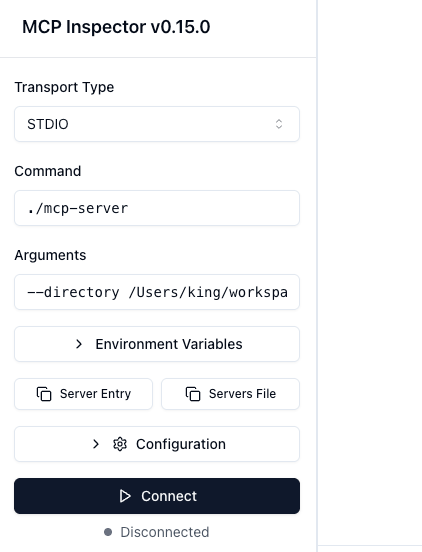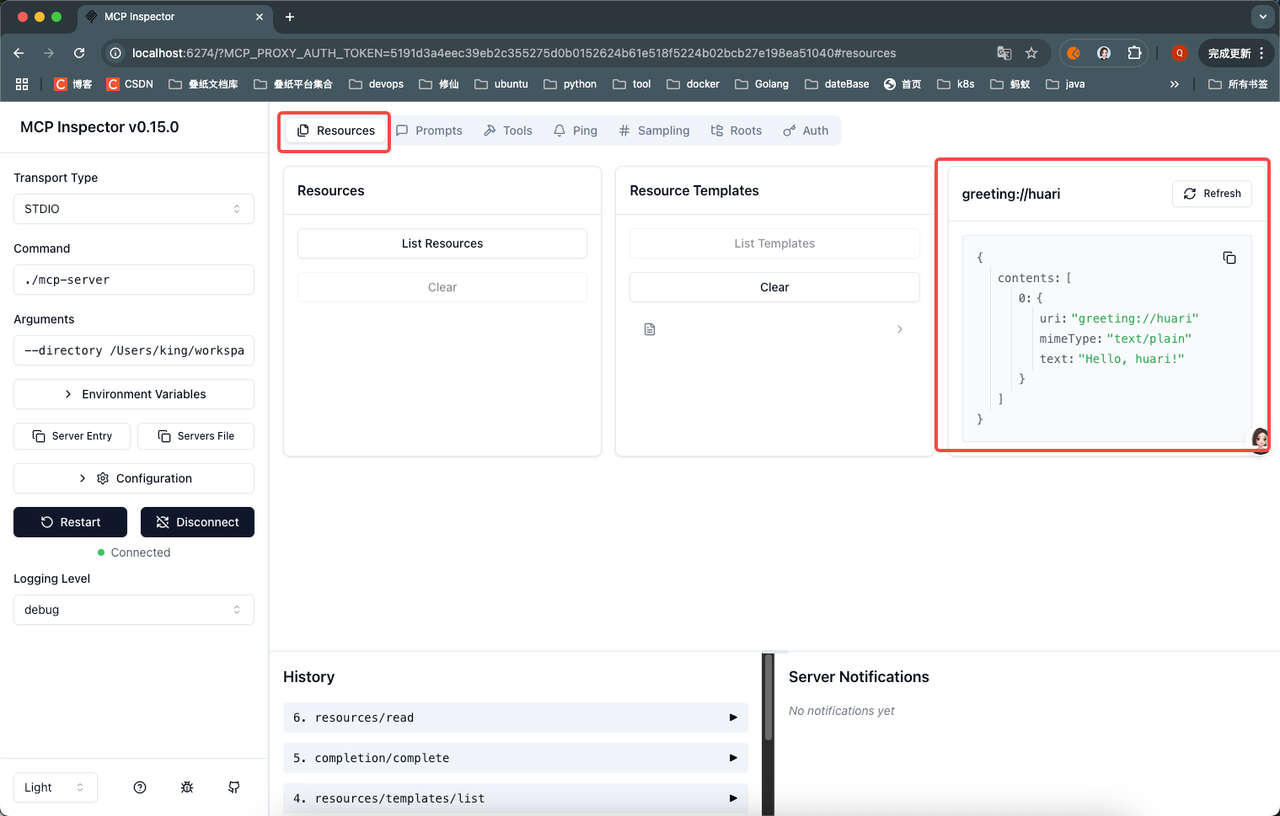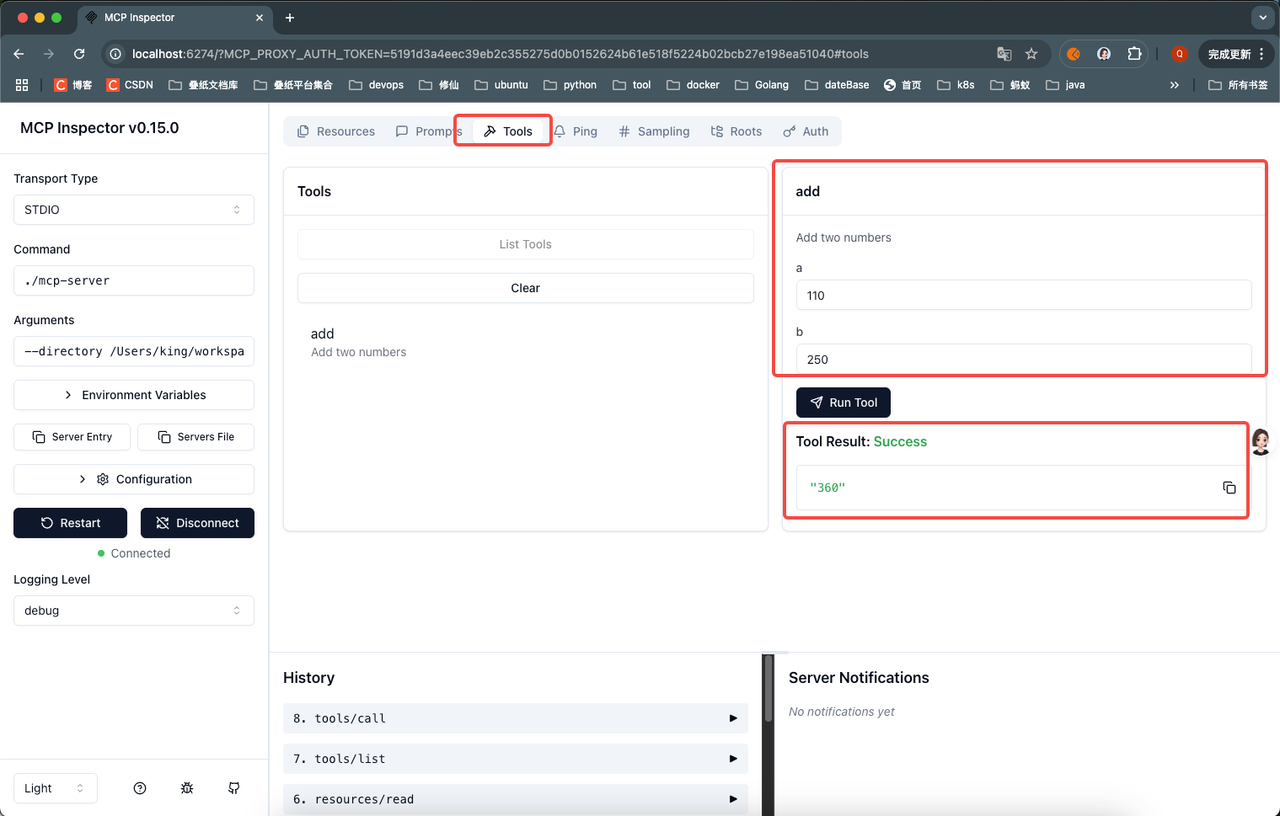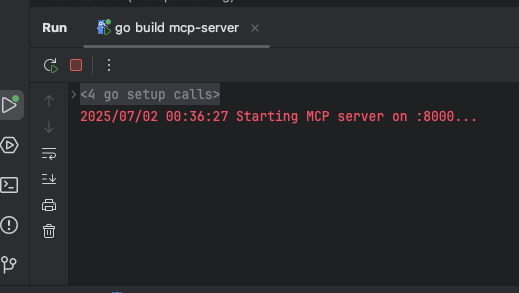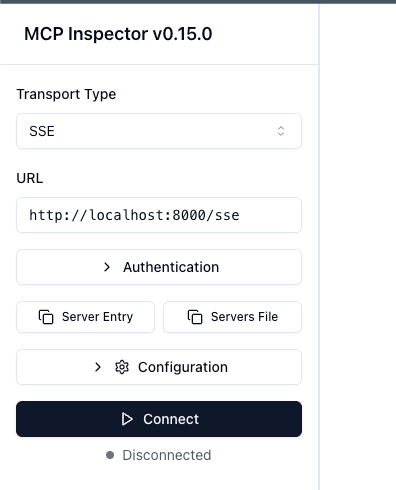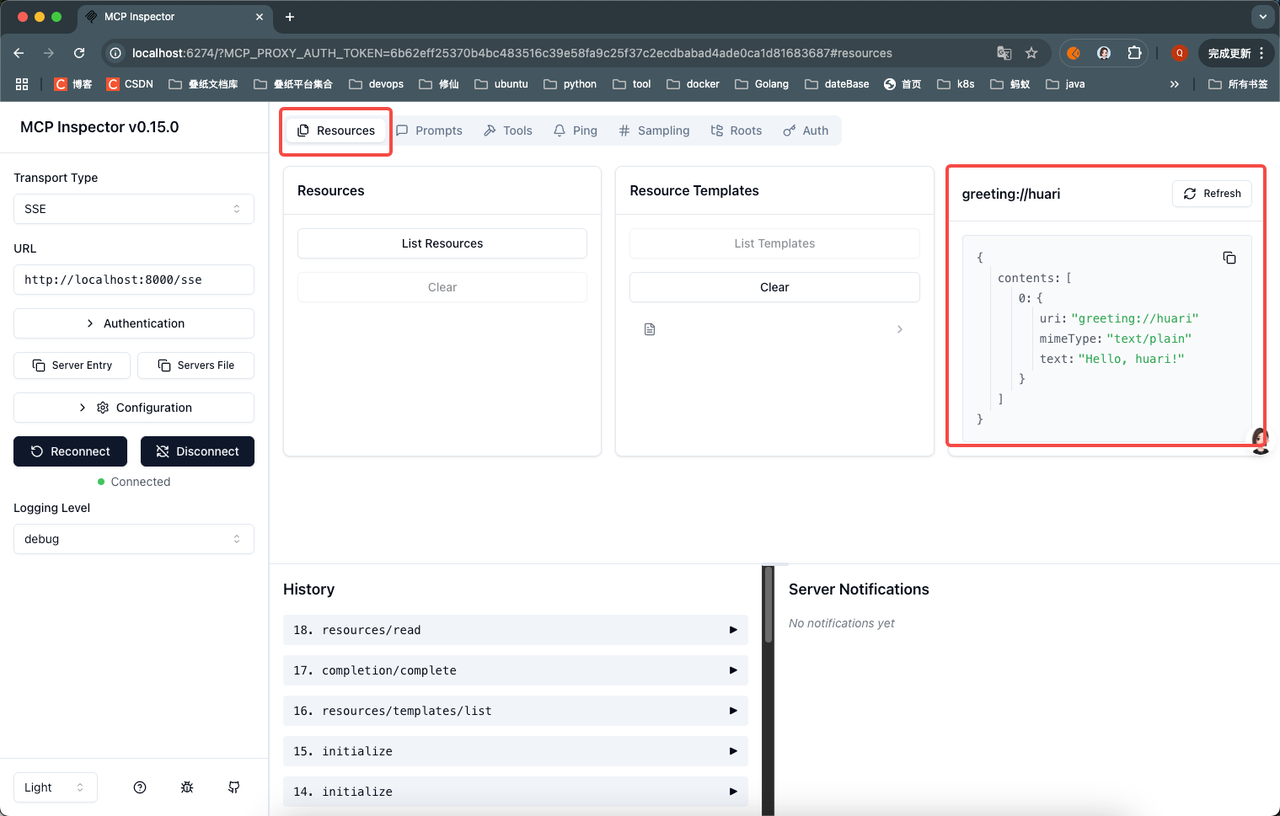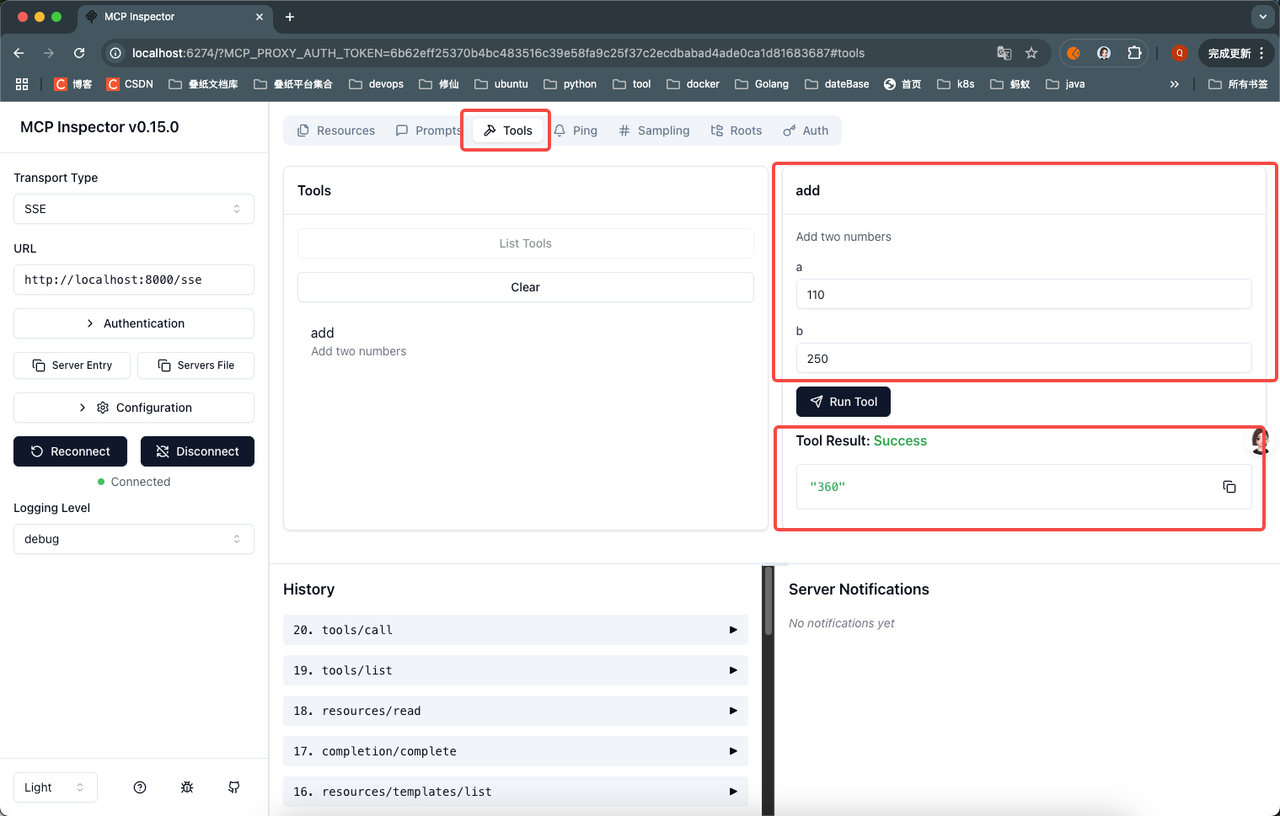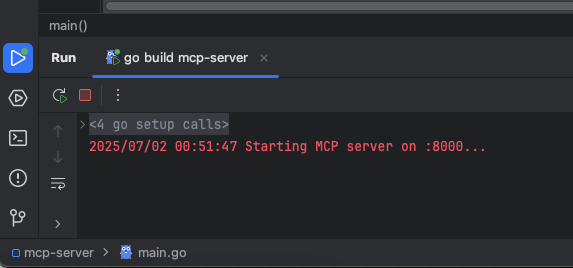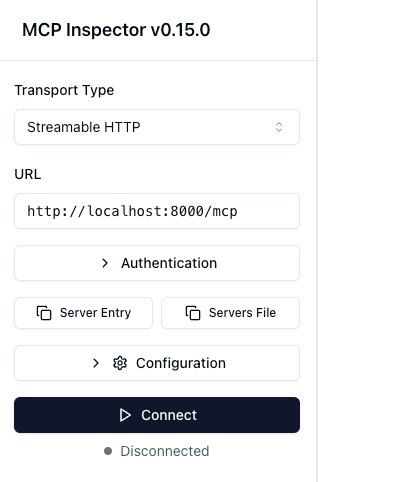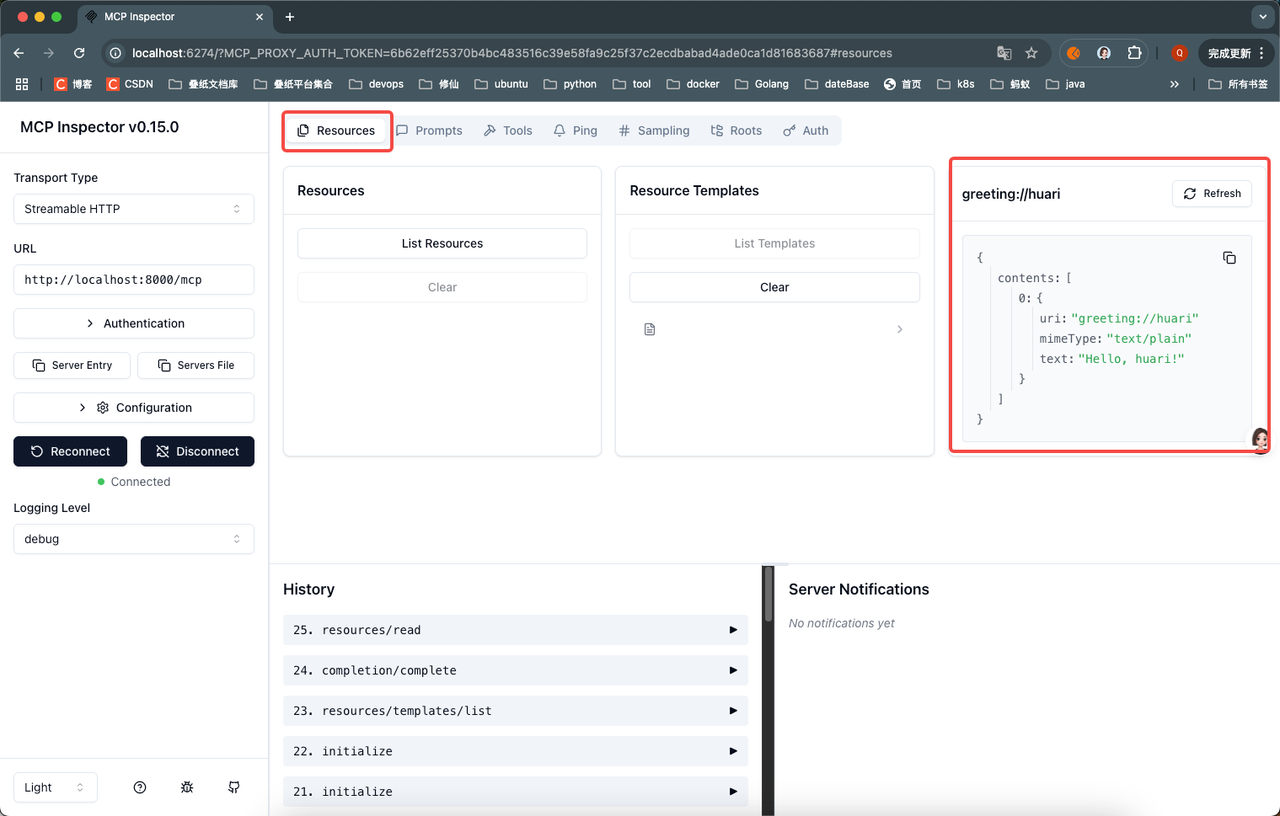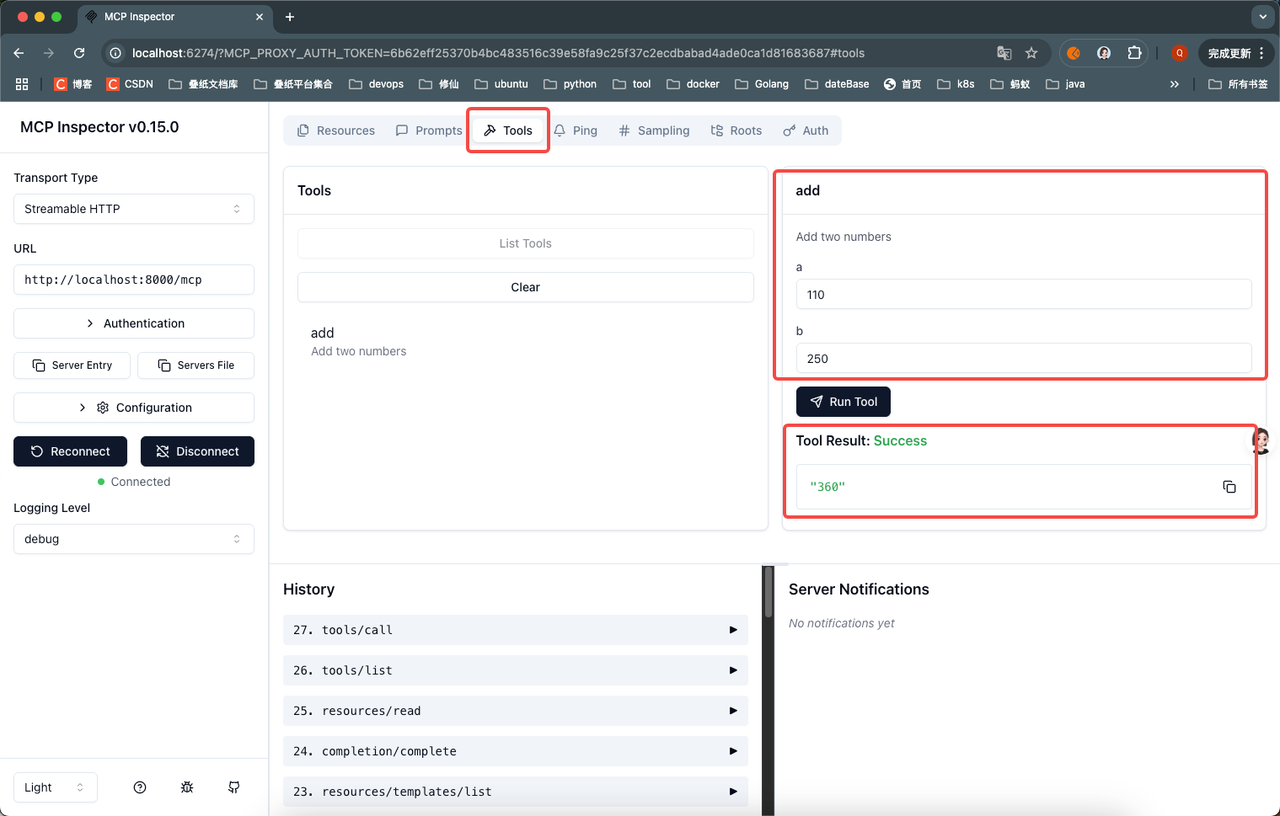前言
官方sdk仓库:https://github.com/modelcontextprotocol/go-sdk
环境准备
创建工作目录:mcp-server
1 | 创建&进入工作目录 |
Mcp demo
测试-stdio(本地)测试
将下面的代码保存为main.go文件:
1 | package main |
将go代码编译成可执行二进制文件:
1 | go build -o mcp-server main.go |
执行下面的命令启动mcp inspector:
1 | npx @modelcontextprotocol/inspector |
会有类似的输出:
1 | Starting MCP inspector... |
前端需设置的参数:
- Transport Type:STDIO
- Command参数:./mcp-server
- Arguments参数:–directory /Users/king/workspace-test/mcp-server
这里的mcp-server就是上面编译出来的可执行二进制文件
测试:
测试-sse(远程)测试
将下面的代码保存为main.go文件:
1 | package main |
执行下面的命令启动mcp inspector:
1 | npx @modelcontextprotocol/inspector |
会有类似的输出:
1 | Starting MCP inspector... |
前端需设置的参数:
- Transport Type:SSE
- URL参数:http://localhost:8000/sse
此处的8000端口根据实际情况修改
测试:
测试-streamable http
将下面的代码保存为main.go文件:
1 | package main |
并将脚本运行起来!
执行下面的命令启动mcp inspector:
1 | npx @modelcontextprotocol/inspector |
会有类似的输出:
1 | Starting MCP inspector... |
前端需设置的参数:
- Transport Type:SSE
- URL参数:http://localhost:8000/sse
此处的8000端口根据实际情况修改
测试:

